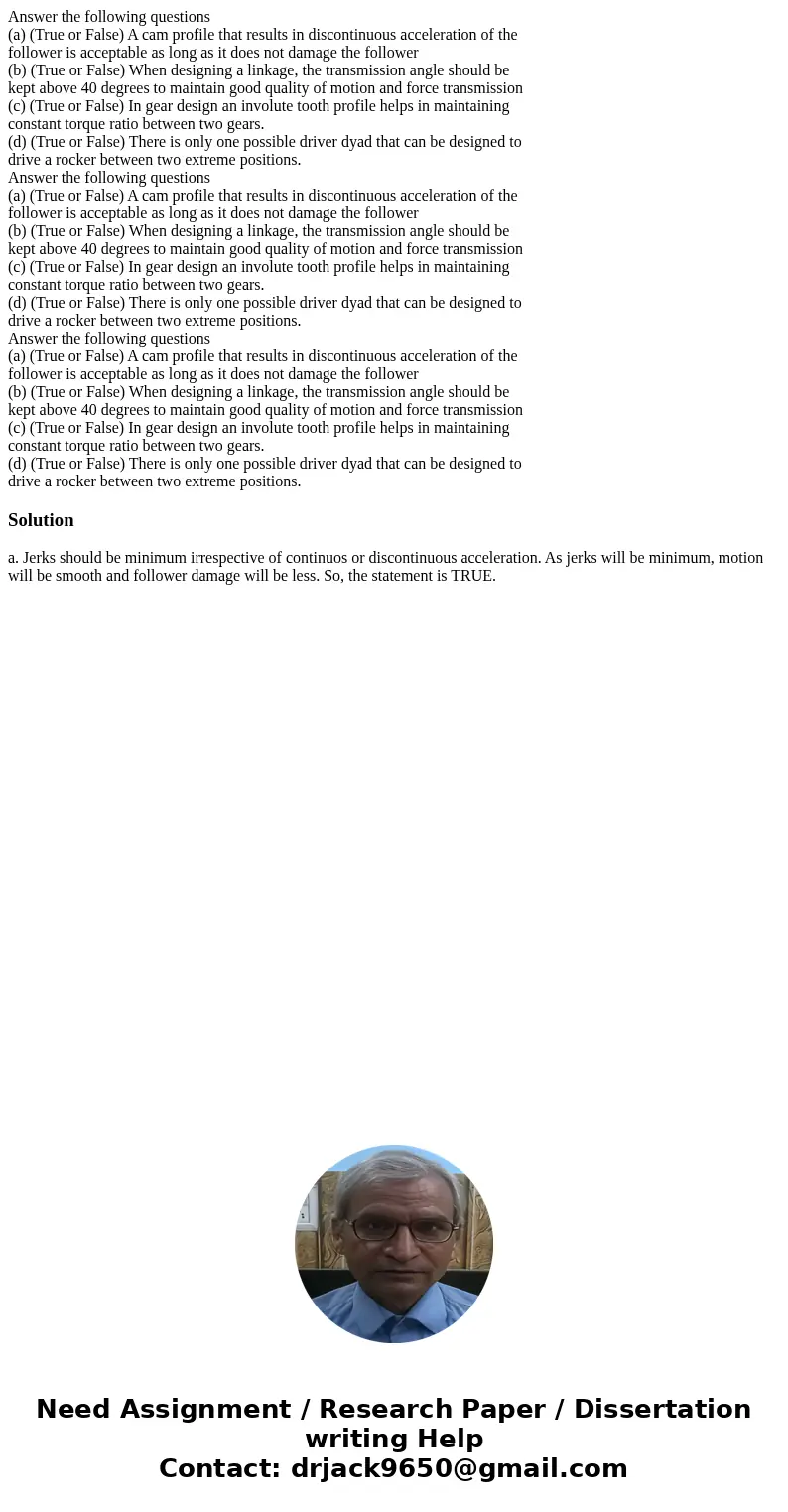Answer the following questions a True or False A cam profile
Answer the following questions
(a) (True or False) A cam profile that results in discontinuous acceleration of the
follower is acceptable as long as it does not damage the follower
(b) (True or False) When designing a linkage, the transmission angle should be
kept above 40 degrees to maintain good quality of motion and force transmission
(c) (True or False) In gear design an involute tooth profile helps in maintaining
constant torque ratio between two gears.
(d) (True or False) There is only one possible driver dyad that can be designed to
drive a rocker between two extreme positions.
Answer the following questions
(a) (True or False) A cam profile that results in discontinuous acceleration of the
follower is acceptable as long as it does not damage the follower
(b) (True or False) When designing a linkage, the transmission angle should be
kept above 40 degrees to maintain good quality of motion and force transmission
(c) (True or False) In gear design an involute tooth profile helps in maintaining
constant torque ratio between two gears.
(d) (True or False) There is only one possible driver dyad that can be designed to
drive a rocker between two extreme positions.
Answer the following questions
(a) (True or False) A cam profile that results in discontinuous acceleration of the
follower is acceptable as long as it does not damage the follower
(b) (True or False) When designing a linkage, the transmission angle should be
kept above 40 degrees to maintain good quality of motion and force transmission
(c) (True or False) In gear design an involute tooth profile helps in maintaining
constant torque ratio between two gears.
(d) (True or False) There is only one possible driver dyad that can be designed to
drive a rocker between two extreme positions.
Solution
a. Jerks should be minimum irrespective of continuos or discontinuous acceleration. As jerks will be minimum, motion will be smooth and follower damage will be less. So, the statement is TRUE.

 Homework Sourse
Homework Sourse